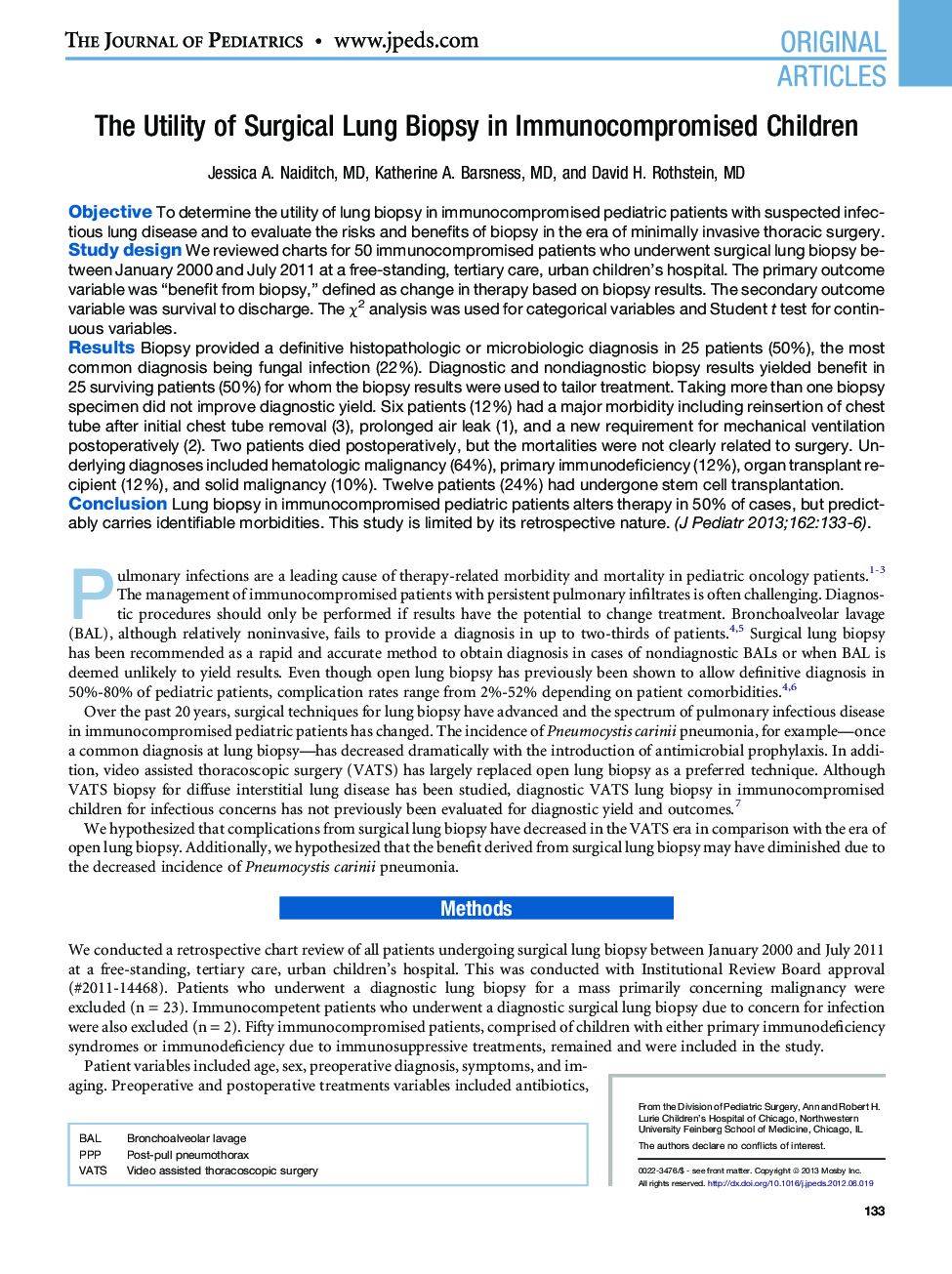| Article ID | Journal | Published Year | Pages | File Type |
|---|---|---|---|---|
| 6224348 | The Journal of Pediatrics | 2013 | 5 Pages |
ObjectiveTo determine the utility of lung biopsy in immunocompromised pediatric patients with suspected infectious lung disease and to evaluate the risks and benefits of biopsy in the era of minimally invasive thoracic surgery.Study designWe reviewed charts for 50 immunocompromised patients who underwent surgical lung biopsy between January 2000 and July 2011 at a free-standing, tertiary care, urban children's hospital. The primary outcome variable was “benefit from biopsy,” defined as change in therapy based on biopsy results. The secondary outcome variable was survival to discharge. The Ï2 analysis was used for categorical variables and Student t test for continuous variables.ResultsBiopsy provided a definitive histopathologic or microbiologic diagnosis in 25 patients (50%), the most common diagnosis being fungal infection (22%). Diagnostic and nondiagnostic biopsy results yielded benefit in 25 surviving patients (50%) for whom the biopsy results were used to tailor treatment. Taking more than one biopsy specimen did not improve diagnostic yield. Six patients (12%) had a major morbidity including reinsertion of chest tube after initial chest tube removal (3), prolonged air leak (1), and a new requirement for mechanical ventilation postoperatively (2). Two patients died postoperatively, but the mortalities were not clearly related to surgery. Underlying diagnoses included hematologic malignancy (64%), primary immunodeficiency (12%), organ transplant recipient (12%), and solid malignancy (10%). Twelve patients (24%) had undergone stem cell transplantation.ConclusionLung biopsy in immunocompromised pediatric patients alters therapy in 50% of cases, but predictably carries identifiable morbidities. This study is limited by its retrospective nature.
